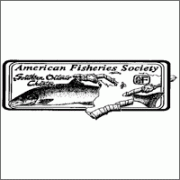Fish-Habitat Associations in the Middle Detroit River
AUTHOR(S): Nicolas W.R. Lapointe, Lynda D. Corkum and Nicholas E. Mandrak
CITATION:
Lapointe*, N.W.R., L.D. Corkum and N.E. Mandrak. 2004. Fish-habitat associations in the middle Detroit River.
Poster presented at the 2004 Southern Ontario Chapter of the American Fisheries Society Annual Meeting, February 21-22, Leslie M. Frost Centre, Dorset, Ontario.
ABSTRACT:
A 10 km reach of the Detroit River near Fighting Island was sampled during the summer of 2003 to examine fish-habitat associations. Using underwater video and Ekman grabs, we classified the substrate at 300 locations in depths <3 m as either mud, sand, gravel, weeds on a soft substrate, or weeds on a hard substrate.
Thirty sites with homogeneous substrates were selected at random. Fishes were then sampled at these sites in July and August using minnow traps, Windermere traps, hoop nets, trap nets, seine nets, and boat electrofishing. Based on species richness and abundance, minnow traps and trap nets were found to be inefficient sampling methods, whereas seine netting captured the highest species diversity (32 species). Overall, 42 species were found in the study area including Spotted Sucker (Minytrema melanops), a species at risk. Yellow Perch (Perca flavescens), Spottail Shiner (Notropis hudsonius), Bluntnose Minnow (Pimephales notatus), Rock Bass (Ambloplites rupestris) and Largemouth Bass (Micropterus salmoides) were the most common species. Cyprinids (Spottail Shiner and Bluntnose Minnow) were spatially distinct from Largemouth Bass, Pumpkinseed (Lepomis gibbosus) and Yellow Perch.
VIEW POSTER – Lapointe et al.



